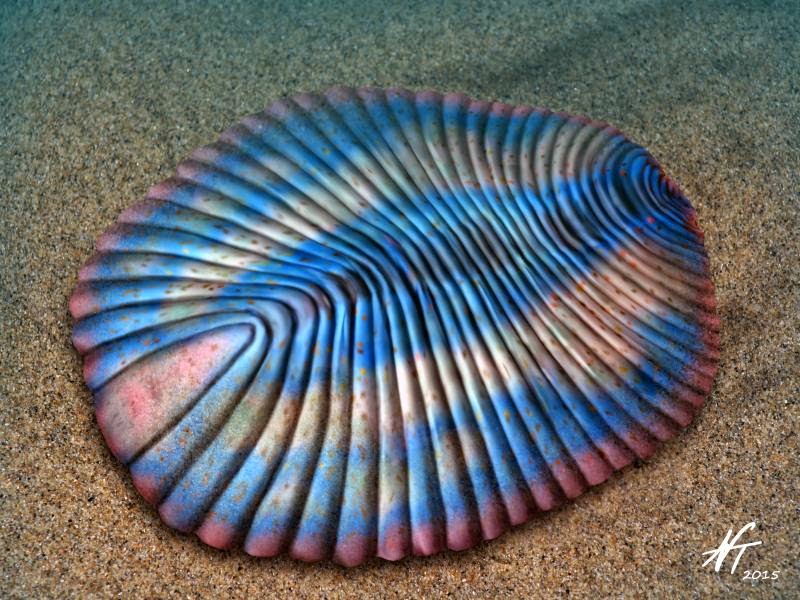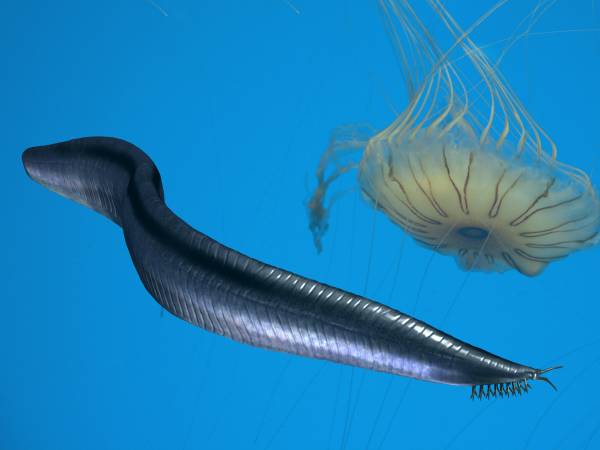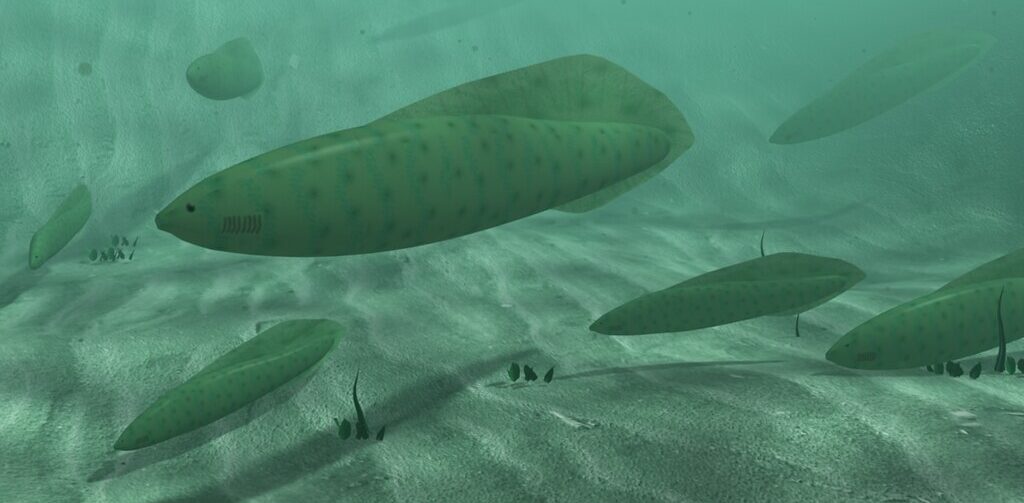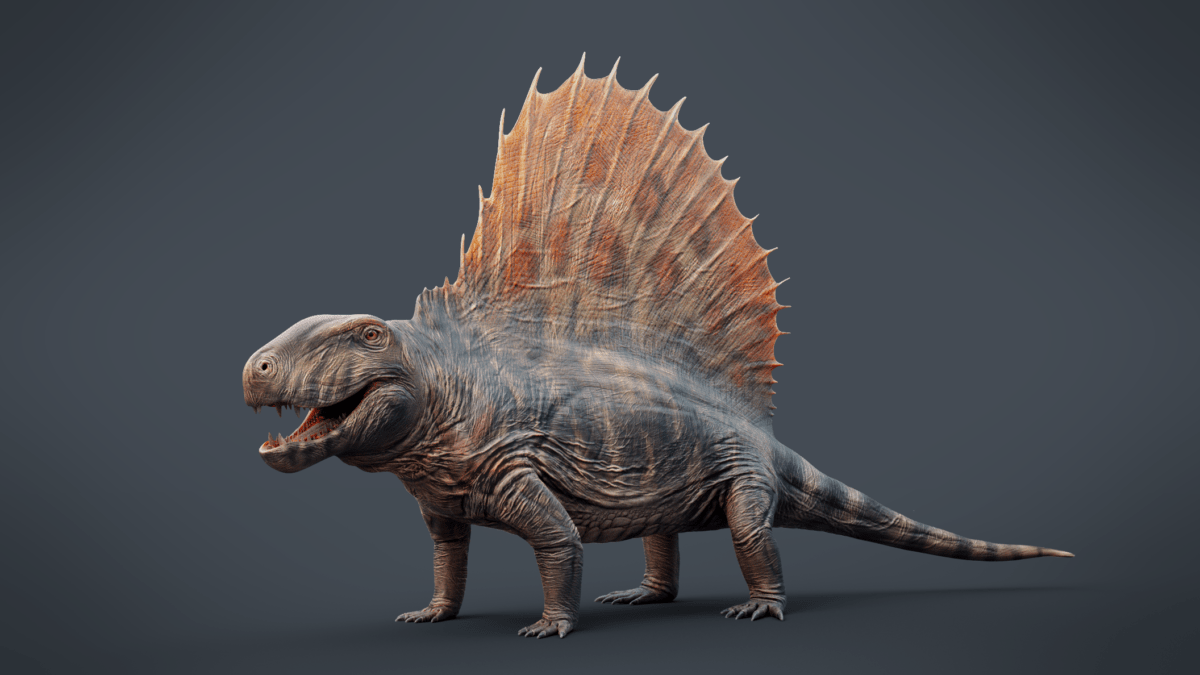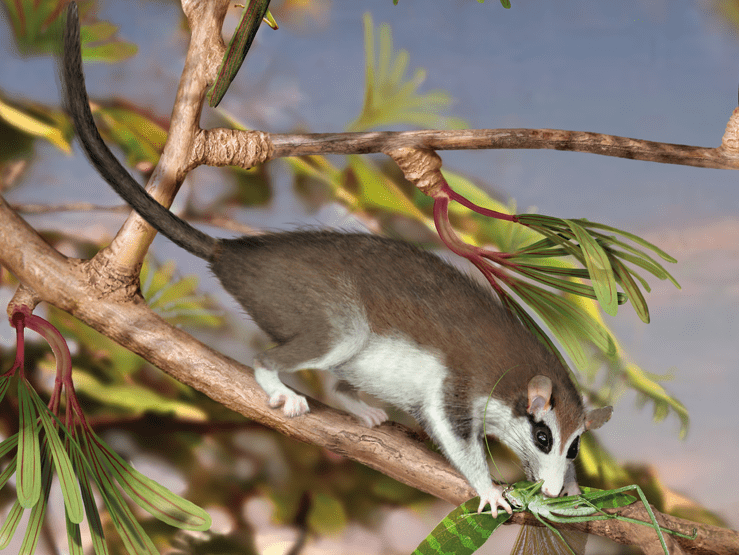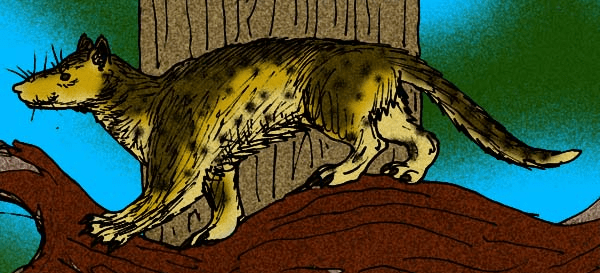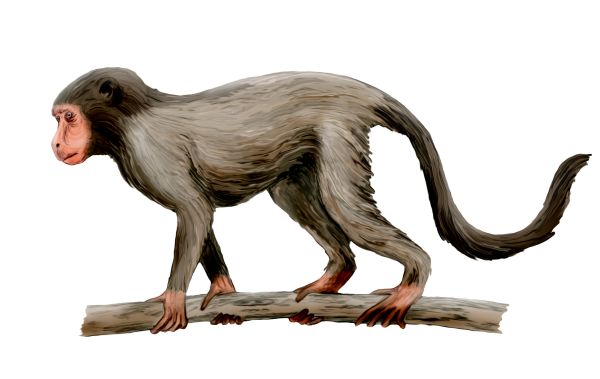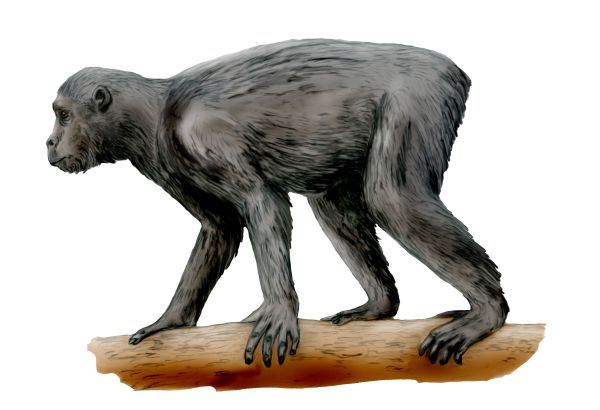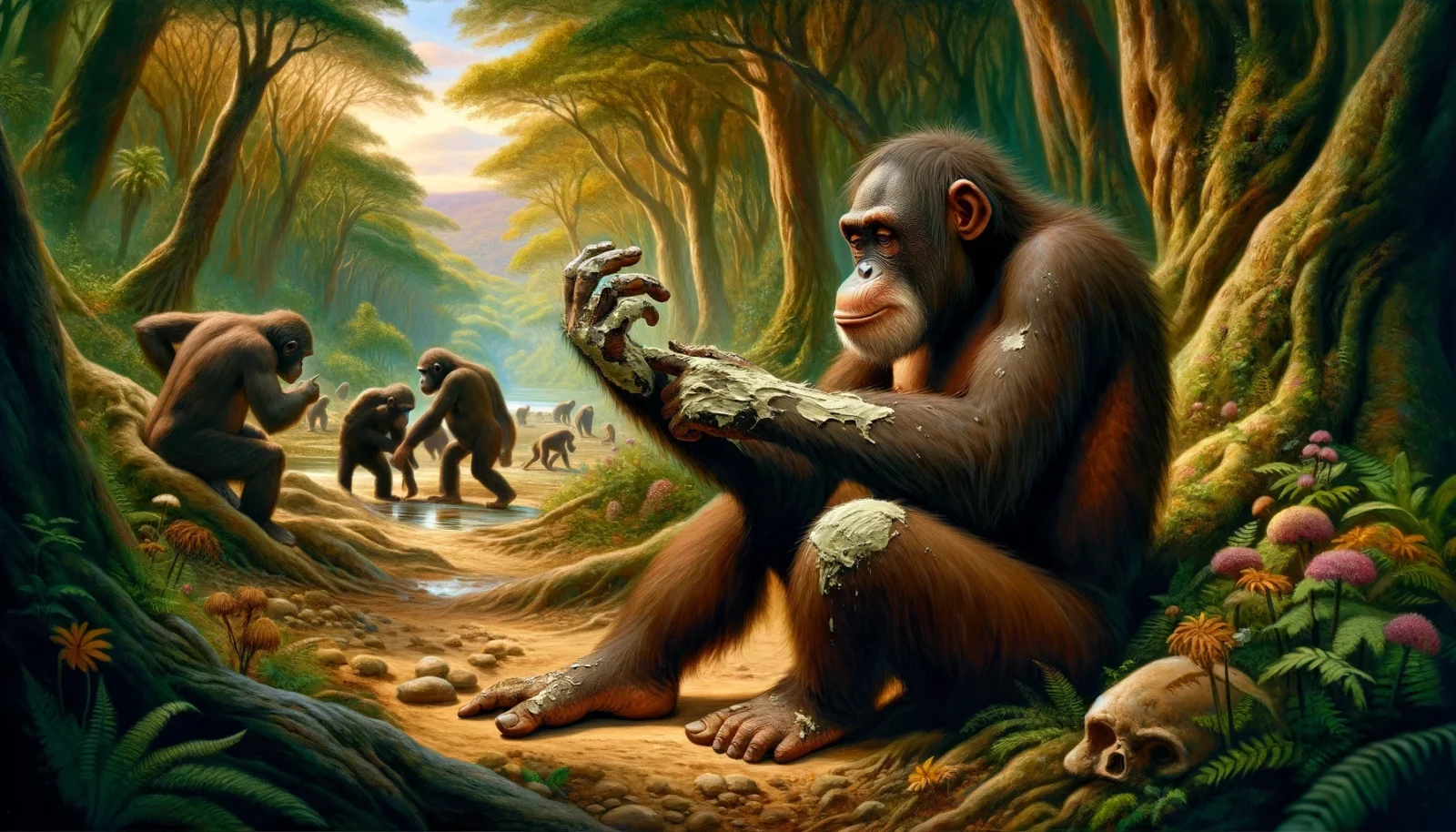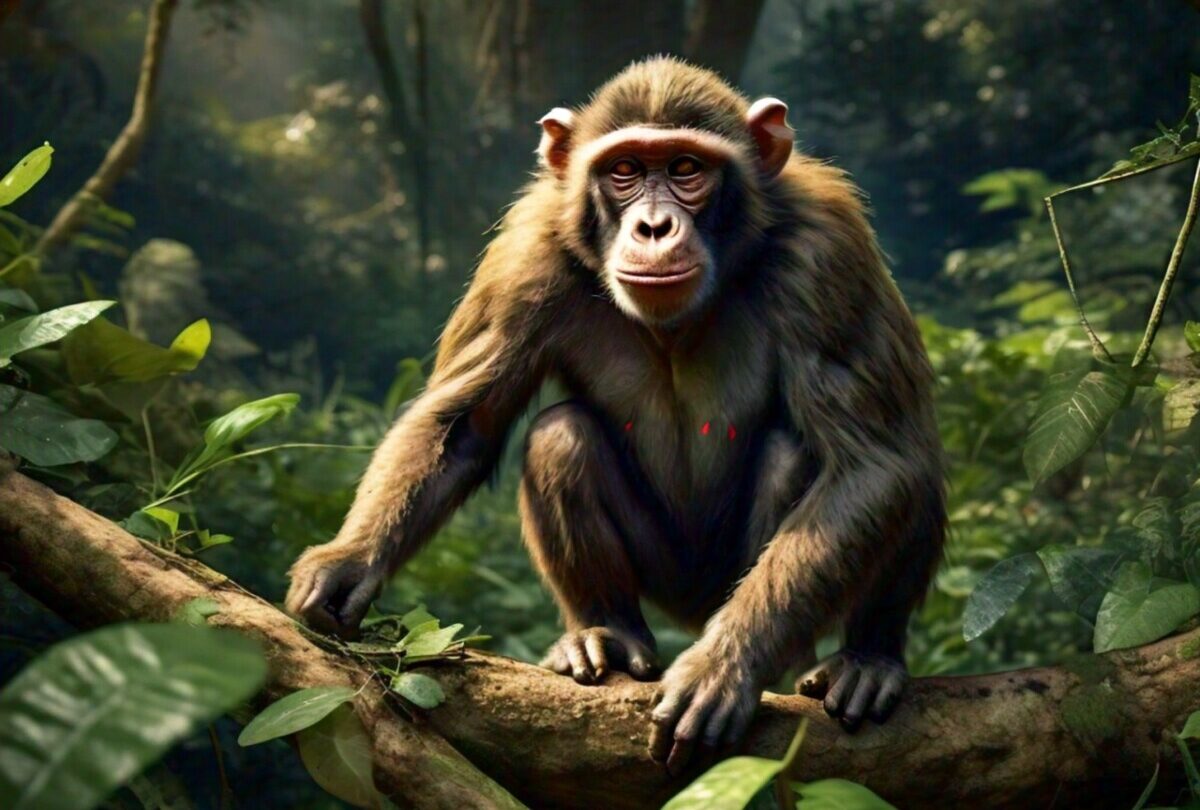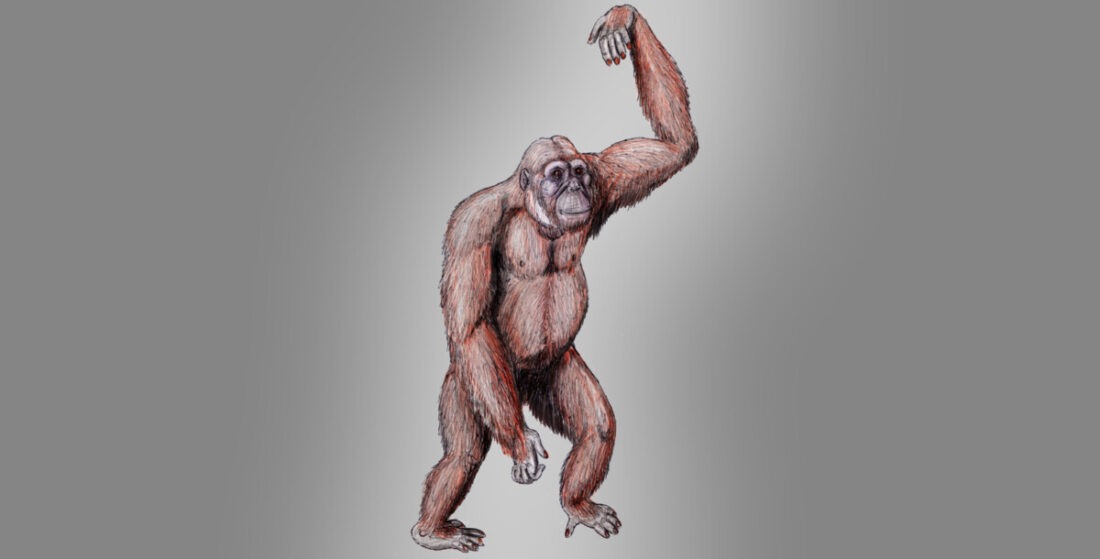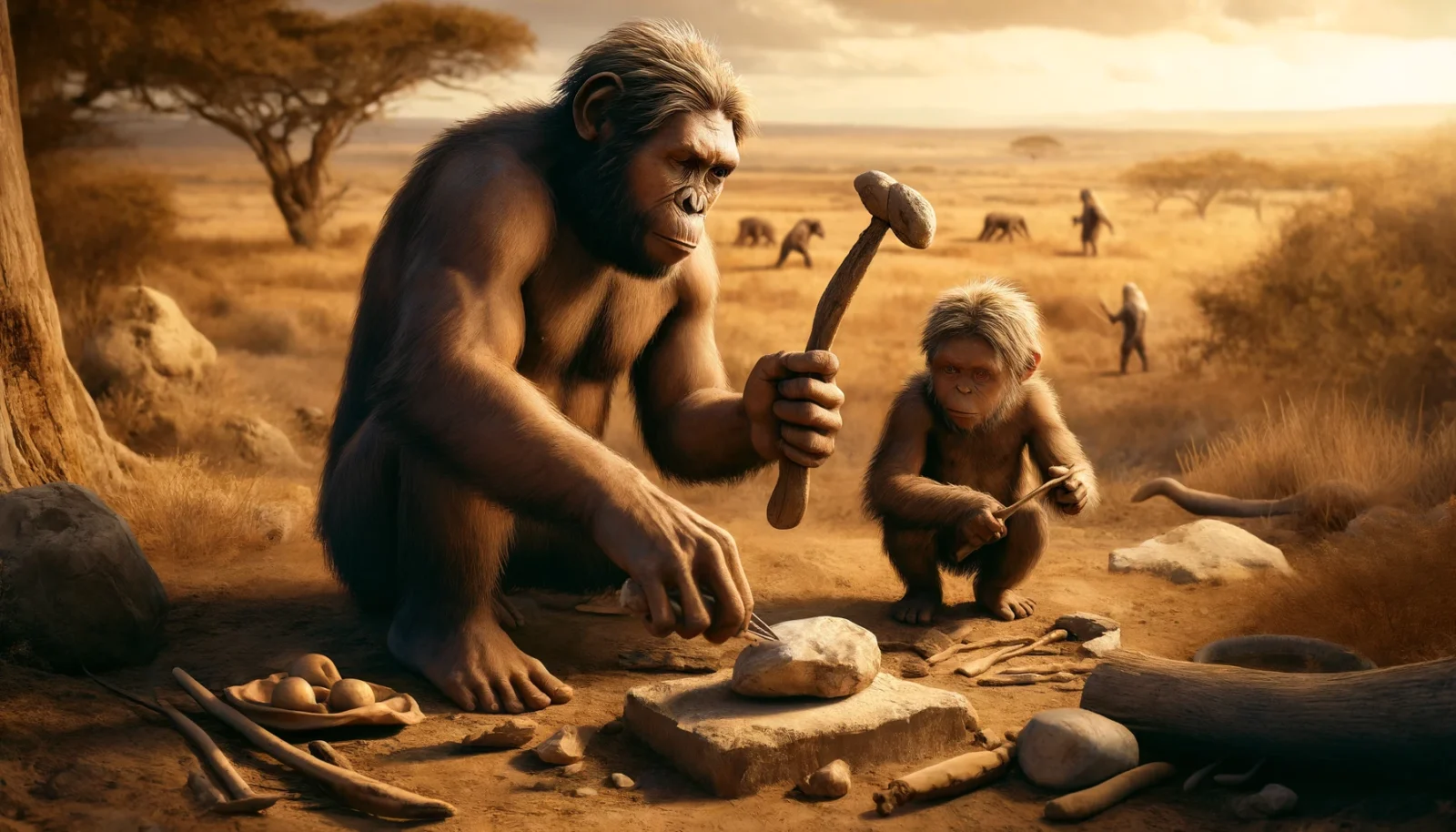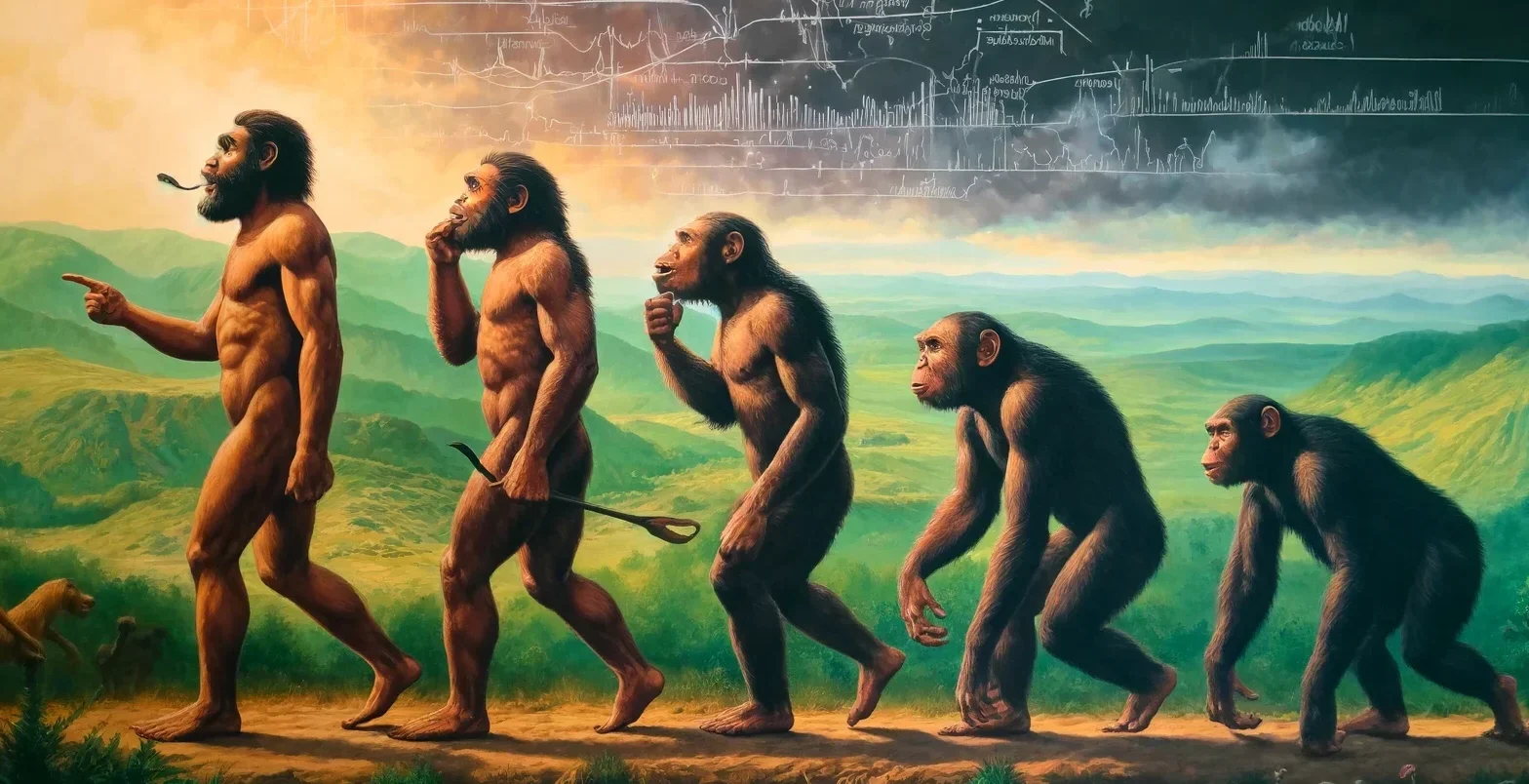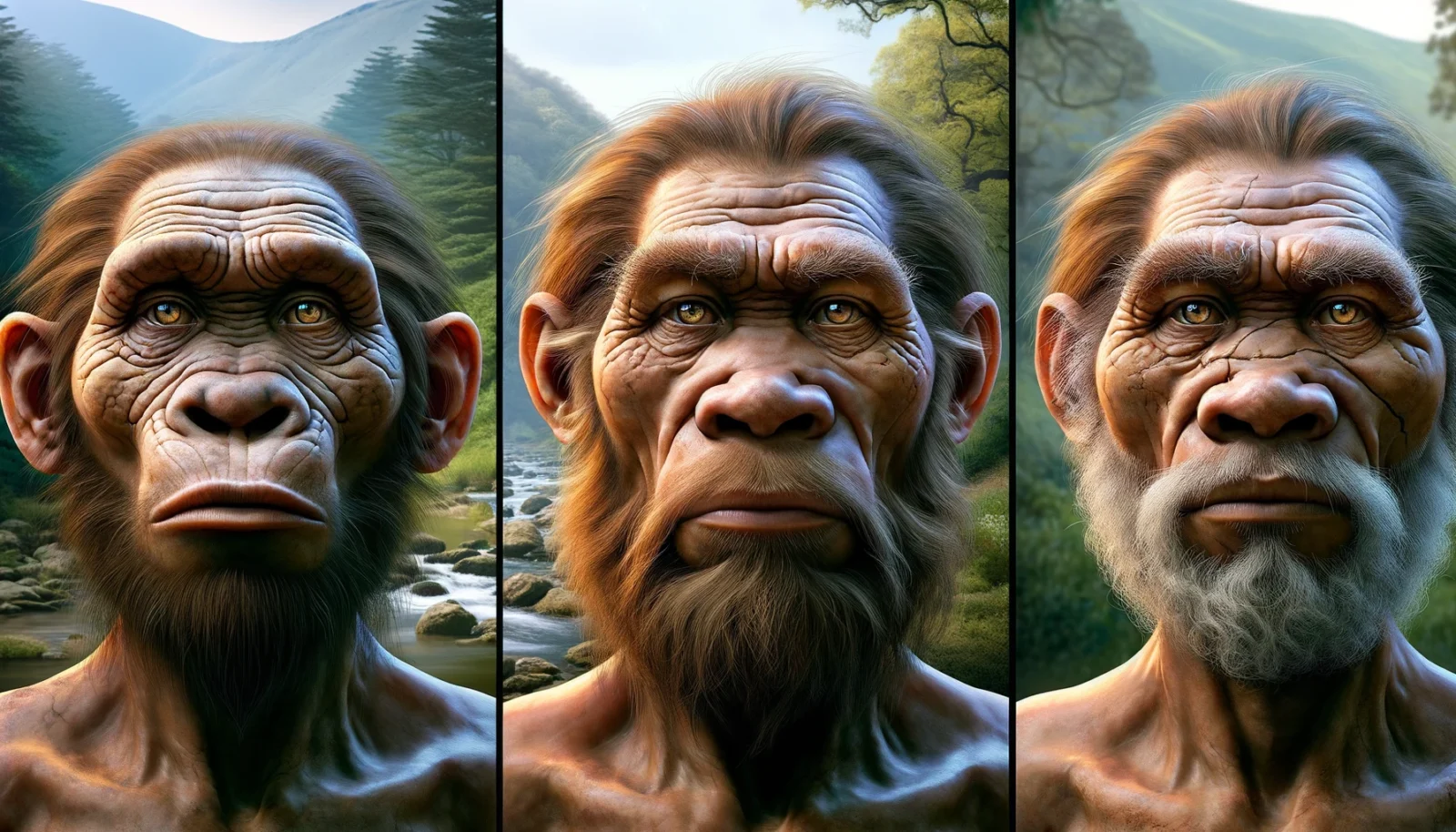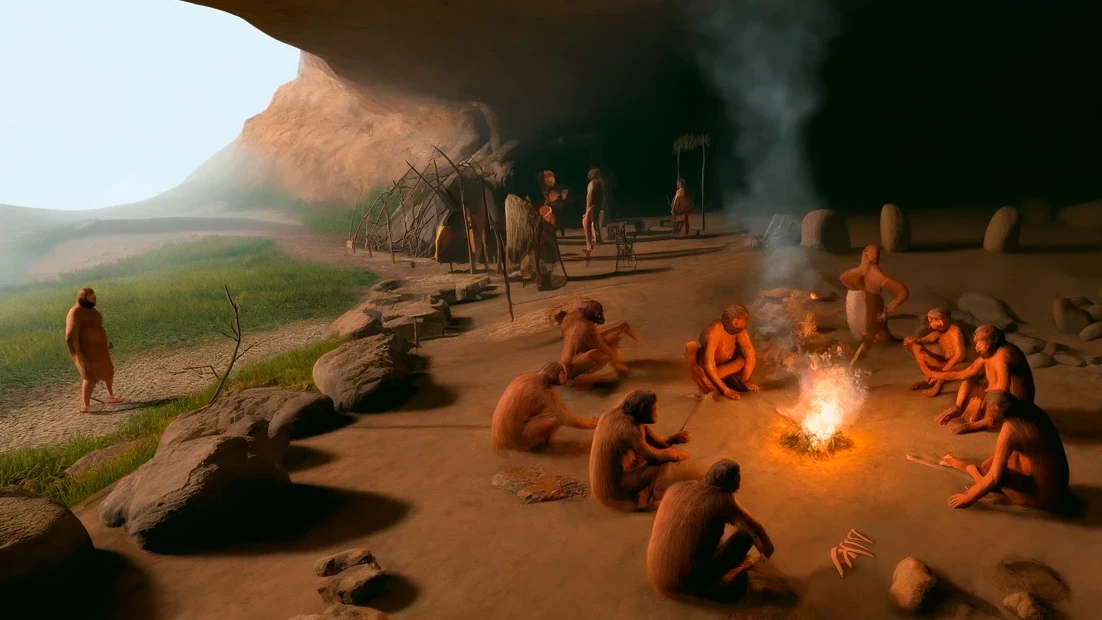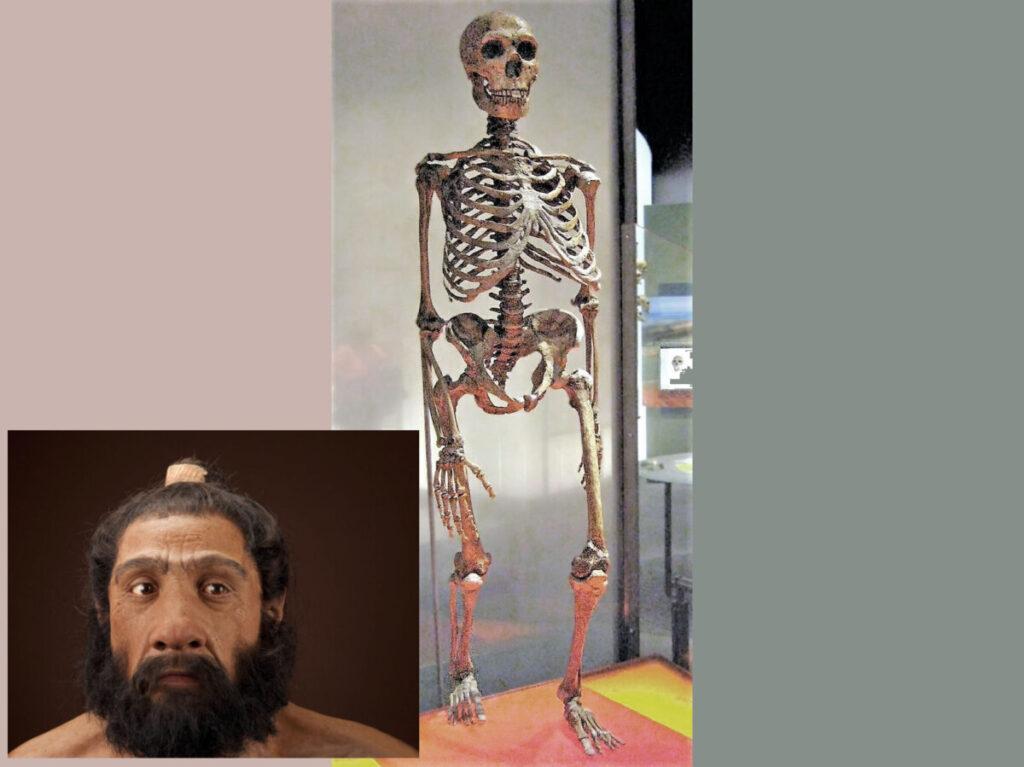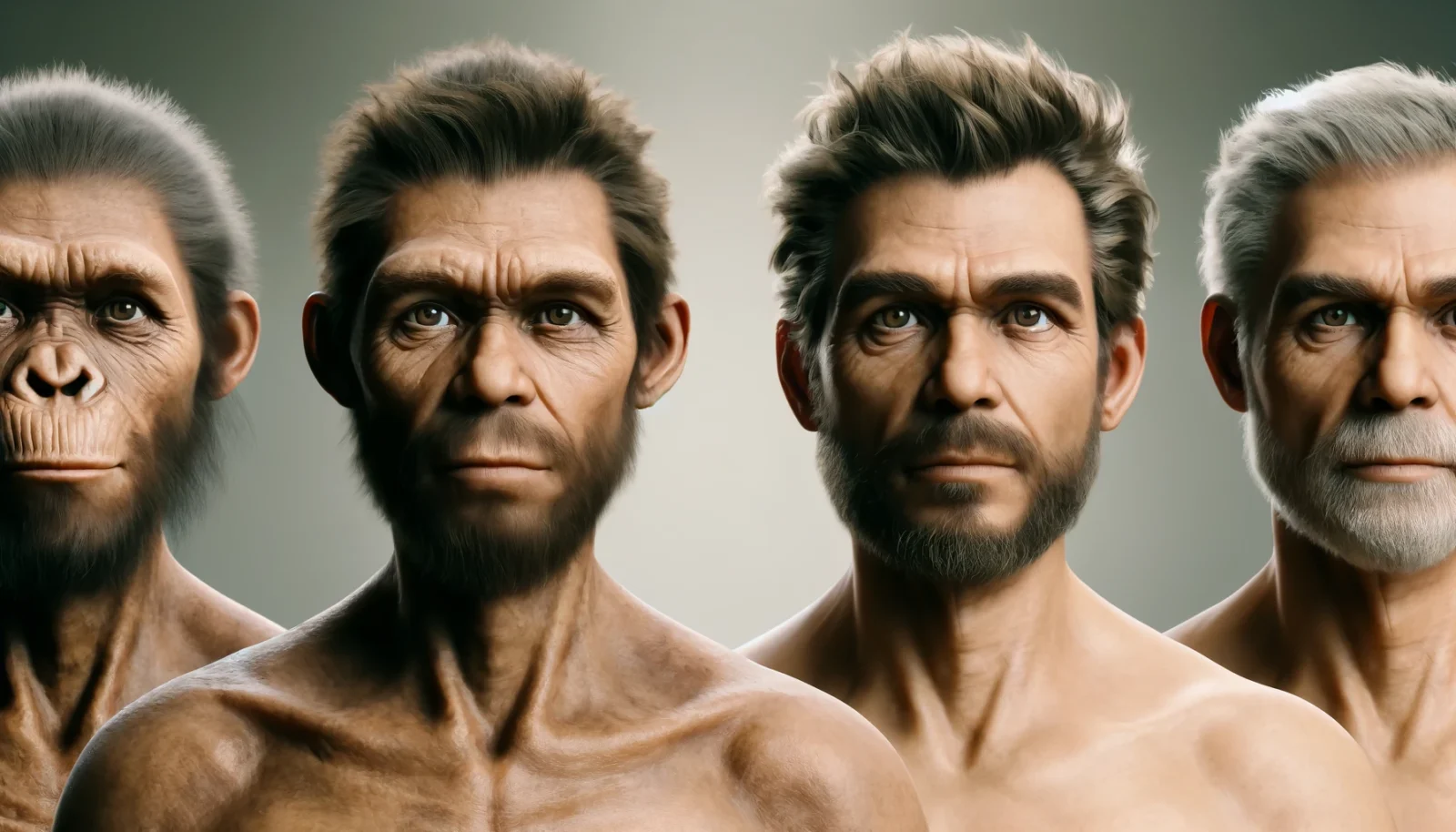Evolution TL: March to Life > Evolution > Great Apes > Human > Consciousness > All to Us
Consciousness: What is consciousness? Check out my Consciousness: From the Soul to the Abyss for an answer. The following is a reasonable timeline of the likely evolution of the traits needed for consciousness. This view demonstrates how consciousness evolved over billions of years. Since we share these consciousness traits with other animals, with the exception of convergent evolution, we can use Occam’s Razor to determine the ancestral source of traits. For those interested in a step-by-step exploration of this process, “Researching Evolutionary Traits: The Occam Approach” provides an in-depth look at the methodology.
Long before the complexity of full-fledged nervous systems, elaborate senses, and brains, life on Earth developed the basic ability to perceive and react to mechanical stimuli—a process known as cellular mechanosensitivity. A contemporary manifestation of this can be observed in the movement of some plants today, such as the Venus flytrap, which responds to touch by snapping shut to capture prey. This early form of proto-sensing, relying on signal transduction pathways within single-celled organisms, represents the precursor to the sophisticated sensory and nervous systems found in later multicellular life. Through mechanisms like ion channel activation and signal transduction cascades, these primitive organisms could respond to touch and pressure, paving the way for the evolutionary journey towards more advanced forms of perception. This foundational stage of sensory evolution, occurring as early as 800 million years ago, underscores the deep biological roots of our ability to sense and interact with the world around us.
- Domain: Eukaryota > Kingdom: Animalia > Phylum: Porifera (sponges)
Creatures of this time evolved into fish (us), jellyfish, cephlapods, and arthropods. In the deep waters of the late Precambrian era, the seeds of sentience were sown with the evolution of the earliest common ancestors to later cephalopods and fish. These primordial creatures, equipped with the most basic nervous systems, embarked on the path toward sensing and interacting with their surroundings in novel ways. Some of these species might have evolved some pre-brained memory, setting the foundational capabilities for interaction and adaptation within their environments. While far removed from the complex behaviors of their future descendants, these early organisms’ ability to respond to environmental cues marked the dawn of simple sentience in the animal kingdom. This pivotal moment laid the foundation for the intricate tapestry of life that would evolve, branching into the diverse forms of sentience observed in the animal world today.
Ediacaran biota (about 635 to 541 million years ago): By about 635 million years ago, clearly identified plant eaters evolved. Thriving in the oceans. Characterized by their unusual and diverse shapes, ranging from frond-like patterns to disk and tubular structures, the Ediacaran biota’s body plans defy easy comparison with modern life forms. The significance of the Ediacaran biota lies not just in their ancientness but in their representation of life’s experimental forays into multicellularity, offering clues to the evolutionary transition from simple microbial life to the complex organisms that would come to dominate the Earth. While we don’t know if this creature had a proto-nervous system, their existence set the stage for the Cambrian Explosion.
Chemoreception, the ability to detect chemical stimuli, likely emerged around 600 million years ago among some of the earliest soft-bodied multicellular organisms. This evolutionary leap did not necessarily require a proto- or pre-brain in the complex sense associated with later animals but rather relied on cellular mechanisms capable of processing chemical information. These early forms of chemoreception enabled organisms to make rudimentary distinctions necessary for survival, such as identifying nutritive substances versus harmful ones. They could “taste” potential food sources upon direct contact and “smell” chemicals dissolved in the water, guiding them towards nourishment or away from danger. These primitive sensory mechanisms laid the groundwork for the sophisticated development of taste and smell in more complex animals.
Kimberella (circa 560 Mya): The Kimberella, while not an ancestor of vertebrates, is a likely early example of a creature with chemoreception. It is potentially an early mollusk, and exemplifies the importance of chemoreception in early animal life. Its grazing on microbial mats would have necessitated a basic form of chemoreception to discern between nutritious and non-nutritious substances. The distinction between food sources implies an elementary ability to ‘taste’ and ‘smell,’ integral for selecting suitable food. This behavior marks a significant step in the evolutionary sophistication of sensory systems, foreshadowing the complex senses of taste and smell found in later species.
- Domain: Eukaryota > Kingdom: Animalia > Phylum: Bilateria or Mollusca
Vision evolved as early as 540 million years ago during the Cambrian explosion. The ability to see, alongside the development of hearing, provided organisms with the evolutionary advantage of sensing their environment from a distance. This sensory evolution necessitated the development of larger brains for the complex processing of visual data, marking a pivotal moment in the cognitive evolution of life.
Pikaia Gracilens (520 to 505 Mya): In the ancient seas of the Middle Cambrian, starting around 520 million years ago, Pikaia gracilens swam into the annals of evolutionary history as one of the earliest known chordates, a group that would eventually give rise to vertebrates, including fish and, much later, humans. Measuring up to 6 centimeters in length, Pikaia boasted a series of notable features for its time, including a notochord—a flexible rod running along its back, which would become the backbone in its vertebrate descendants—and rudimentary structures suggesting the early development of a circulatory and nervous system. While Pikaia itself lacked well-defined eyes, its place in the evolutionary lineage hints at the beginnings of the complex sensory organs that would become eyes in later vertebrates.
From no sentience or presentience to solidly “Simple Sentience,” early fish during this time represent our ancestral beings that started to suffer and feel the dichotomy of pleasure and pain.
Haikouichthys (circa 520 Million Years Ago): Dwelling in the ancient seas of the Cambrian period, Haikouichthys is among the earliest forms of vertebrate life, showcasing fundamental advancements in the complexity of the nervous system. Unlike its precursors in the Ediacaran period, which exhibited only the most rudimentary forms of interaction with their environment, Haikouichthys possessed a more developed nervous system, allowing for more nuanced responses to stimuli. This development marks a significant evolutionary leap towards the ability to experience basic forms of what we might consider suffering and pleasure. Its existence underscores a pivotal transition in the evolution of life, bridging the gap between the simplicity of early multicellular organisms and the complexity required for the nuanced experiences of sentience.
- Phylum: Chordata > Class: Agnatha (jawless fish)
Long-Term Memory: By about 375 million years ago, the foundations for long-term memory were likely established among the more complex vertebrates, facilitating survival in increasingly varied and challenging environments.
Tiktaalik is a prime example of this evolutionary milestone. It is an extraordinary creature that bridged the gap between aquatic fish and amphibians. With its forward-facing eyes—an adaptation indicative of its predatory lifestyle, it navigated both the waters and the emerging land habitats. This semi-aquatic way of life, combining elements of both aquatic and terrestrial existence, would have necessitated the use of long-term memory for tasks such as remembering the locations of feeding sites, water bodies, and safe paths between them. Its adaptations, including limbs capable of supporting its weight on land, suggest a complex lifestyle that likely benefited from the development of long-term memory, enabling it to exploit the resources of both realms effectively.
- Kingdom: Animalia > Phylum: Chordata > Class: Sarcopterygii (lobe-finned fishes)
Hearing, which initially appeared in early fish, underwent a remarkable transformation as vertebrates transitioned to terrestrial life a bit after 400 million years ago. Early forms of hearing involved simple pressure-sensitive cells that could detect vibrations in water. As amphibians moved onto land, rudimentary hearing evolved into processing airborne sound. This transition further drove the need for enhanced brain capacity to process increasingly complex sensory information.
Acanthostega (circa 365 Mya): Hearing, a critical evolutionary advancement, underwent significant changes as vertebrates transitioned from aquatic to terrestrial environments. While the earliest forms of hearing evolved in water, allowing organisms to detect vibrations through their bodies, the move onto land posed new challenges and opportunities for auditory systems. Acanthostega, an early amphibian, exemplifies this transition. This period marks a crucial phase in the development of auditory systems capable of detecting a broader range of sounds, setting the stage for the complex hearing abilities observed in later terrestrial vertebrates.
Phylum: Chordata > Subphylum: Vertebrata > Class: Sarcopterygii (Lobe-finned fishes)
Both reptiles and our ancestor synapsids evolved from amphibians. While reptiles evolved better amniotic eggs, synapsid eggs were like amphibian eggs. Synapsid’s birthing process eventually led to mammalian live births. These are the animals that evolved Complex Sentience, the ability to feel various emotions. While it is unknown when this complex spectrum fully evolved, it is defined as the ability to suffer and feel the dichotomy of pleasure and pain. Dimetrodon is an example of a meat eater, which if any of our ancestors were meat eaters. Although not a While dimetrodons were not direct ancestor of mammals, our mammalian ancestors might have been similar to our direct-line ancestors around this time.
Class: Synapsids (pre-mammal, not a dinosaur, not pre-dinosaur)
Evolution: Amphibians > Amniotes > Early Reptiles > Synapsids
Time Period: Late Triassic to Early Jurassic; 295-272 Mya; Diet: Carnivore
The rise of Eomaia scansoria, an early placental mammal, marks a definitive leap towards “Complex Sentience” in the evolutionary saga leading to humans. Unearthed from the Early Cretaceous period, Eomaia’s sophisticated array of mammalian features heralds the advent of deeply emotional and social behaviors. Possessing a brain and nervous system capable of supporting complex emotions, Eomaia represents a lineage increasingly equipped for the nuanced experiences of joy, suffering, pleasure, and pain. This small, shrew-like creature’s life history likely involved care for its young, suggesting the presence of emotional bonds and a capacity for emotional experiences that go beyond mere survival instincts. As one of the earliest examples in the mammalian lineage, Eomaia embodies the evolutionary moment when our ancestors began to navigate the world not just physically but emotionally, setting the stage for the rich tapestry of sentient experiences that characterize human life and our closest animal relatives today.
Likely Proto Self-aware: It’s plausible that it possessed a foundational level of self-awareness, or what can be termed as Proto Self-awareness. This rudimentary sense of self would not meet the criteria for self-recognition observed in modern species but likely included basic self-directed behaviors and an emerging sense of individuality advantageous for survival and social interactions. The cognitive capacities of its descendants suggest that the earliest forms of these traits, essential for navigating complex environments and social dynamics, began to develop around this pivotal point in mammalian evolution.
Emerging in the lush forests of the Eocene, Miacis signifies a pivotal moment in the evolution of cognitive abilities among mammals. As a basal member of the Carnivora, this small, tree-dwelling creature exhibited behaviors and social dynamics suggesting the early stages of self-awareness. Though not akin to the self-recognition seen in humans or other highly intelligent animals, the life of Miacis and its interactions with its environment and conspecifics likely involved a level of awareness and individual recognition. These early forms of cognitive complexity mark the beginning of the path toward the rich inner lives characterized by self-awareness in later mammals.
True Primate: Within mammals, only primates have binocular vision, grasping hands, and flat nails–instead of claws.
Intelligent: Within the dense forests of the Oligocene epoch, Aegyptopithecus zeuxis marked a significant advance in the evolution of intelligence among primates. As an early forerunner to both the great apes and humans, Aegyptopithecus possessed adaptations crucial for enhanced cognitive function, such as a larger brain relative to its body size and eyes positioned for depth perception. These physical traits supported the development of behaviors requiring problem-solving, learning, and adaptation—hallmarks of emerging intelligence. The social life of Aegyptopithecus, inferred from its anatomy and fossil context, likely involved complex interactions and the use of rudimentary tools, setting the stage for the exponential growth in intelligence that characterizes later primates, including humans.
Great Apes LCA candidate: Proconsul, an inhabitant of the Miocene forests in East Africa, stands as a landmark in the evolutionary journey toward self-awareness. This early ape lacked a tail and exhibited a mixture of arboreal and terrestrial traits, providing clues to the social and environmental challenges that likely spurred cognitive advancements. While direct evidence of self-awareness in Proconsul is beyond our reach, its position in the ape lineage suggests the development of social structures and cognitive abilities that predate the sophisticated self-awareness observed in modern great apes, elephants, and dolphins. Proconsul’s world was one of increasing cognitive complexity, setting the stage for the emergence of true self-aware beings, capable of recognizing themselves as distinct entities within their social and natural environments.
While speculative, it is reasonable to position the occassional use of proto-medicine as emerging in the great apes sometime around 18 million years ago. Modern orangutans, apes, and chimpanzees treat wounds, digestive issues, and even use insect repellant. The Great Apes LCA lived around 18 million years ago, so using the Occam Approach, this implies that’s around the time such traits emerged. This demonstration of chronoception, a sense of time, is interesting.
This, of course, is only a guess as dog’s and cat’s, which evolved much earlier, frequently eat specific plants to settle their stomach. Some insects, like Ants, use plant extracts to treat fungal infections in their colonies. While the dog and cat example is likely an example of convergent evolution, the ant example for sure is.
Imagined image: By around this time, the great apes could experience time the way we do. They remember the past while living in the present and anticipating the future. In this case, an early great ape is applying mud to a wound he just experienced while anticipating the mud will soothe the pain and help him feel better in the future.
Great Apes LCA candidate: Kenyapithecus is an extinct genus of great ape that lived in Kenya around 14-16 million years ago. It is considered a potential candidate for the last common ancestor of all great apes, including humans, chimpanzees, gorillas, and orangutans. Kenyapithecus had a mix of primitive and advanced features, with a brain size slightly larger than that of modern chimpanzees and a more human-like dental structure. Its face was likely more flat and human-like than modern great apes, and it may have had a more upright posture. While its exact relationship to modern great apes is still debated, Kenyapithecus provides important insights into the evolution of the great ape lineage.
Complex EI Emerges: Orangutans fall into the Complex EI category. They exhibit a broad spectrum of emotionally intelligent behaviors, including empathy, where they show concern for the welfare of others; the use of emotional cues to communicate and navigate complex social landscapes; self-control and mood management; and problem-solving that incorporates emotional states. Their ability to engage in morally influenced behaviors, such as sharing based on social bonds or altering their behavior to maintain social harmony, underscores their capacity for complex emotional intelligence. Orangutans’ nuanced social interactions, care for their young, and responses to environmental and social challenges demonstrate a sophisticated understanding and management of emotions that align with the hallmarks of complex EI.
Likely an orangutan ancestor: As the branches of the ape family tree diverged, Dryopithecus emerged during the Miocene epoch, offering a glimpse into the early development of primate social structures. Living approximately 13 to 12 million years ago, this early ape flourished in the European forests, at a time slightly preceding or overlapping with the divergence of orangutans around 12 to 16 million years ago. This timeline positions Dryopithecus as an example of early apes developing complex social behaviors that may have included rudimentary forms of cultural transmission.
Inhabiting a world of dense forests and diverse ecosystems, Dryopithecus likely navigated a social landscape that required adaptive behaviors and communication skills, setting the stage for the evolution of more sophisticated social learning and cultural transmission. These early apes were not direct ancestors of modern orangutans but rather part of a broader group of Miocene apes that explored various adaptive strategies. The evolution of social learning in such environments underscores the beginnings of culture, where knowledge and behaviors started to be passed down through generations, shaping the social dynamics of future ape lineages.
The dawn of collective learning can be traced back the oldest known stone tools, discovered at Lomekwi 3 in Kenya. The creation of these tools required more than just individual innovation; it involved the rudimentary form of collective learning, where knowledge of toolmaking was shared within groups. This early transmission of skills not only enhanced survival and adaptation but also marked the beginning of cultural accumulation—a fundamental characteristic that would define human societies.
Collective learning is the 6th threshold in Big History. While they place it at about 200,000 years ago, I recrafted it as Trasendental Intelligence and moved it back to 475,000 years. Collective learning, likely started with cultural transmission and the making of tools is a good example. If you agree, then collective learning moves back to at least 3.3 million years ago.
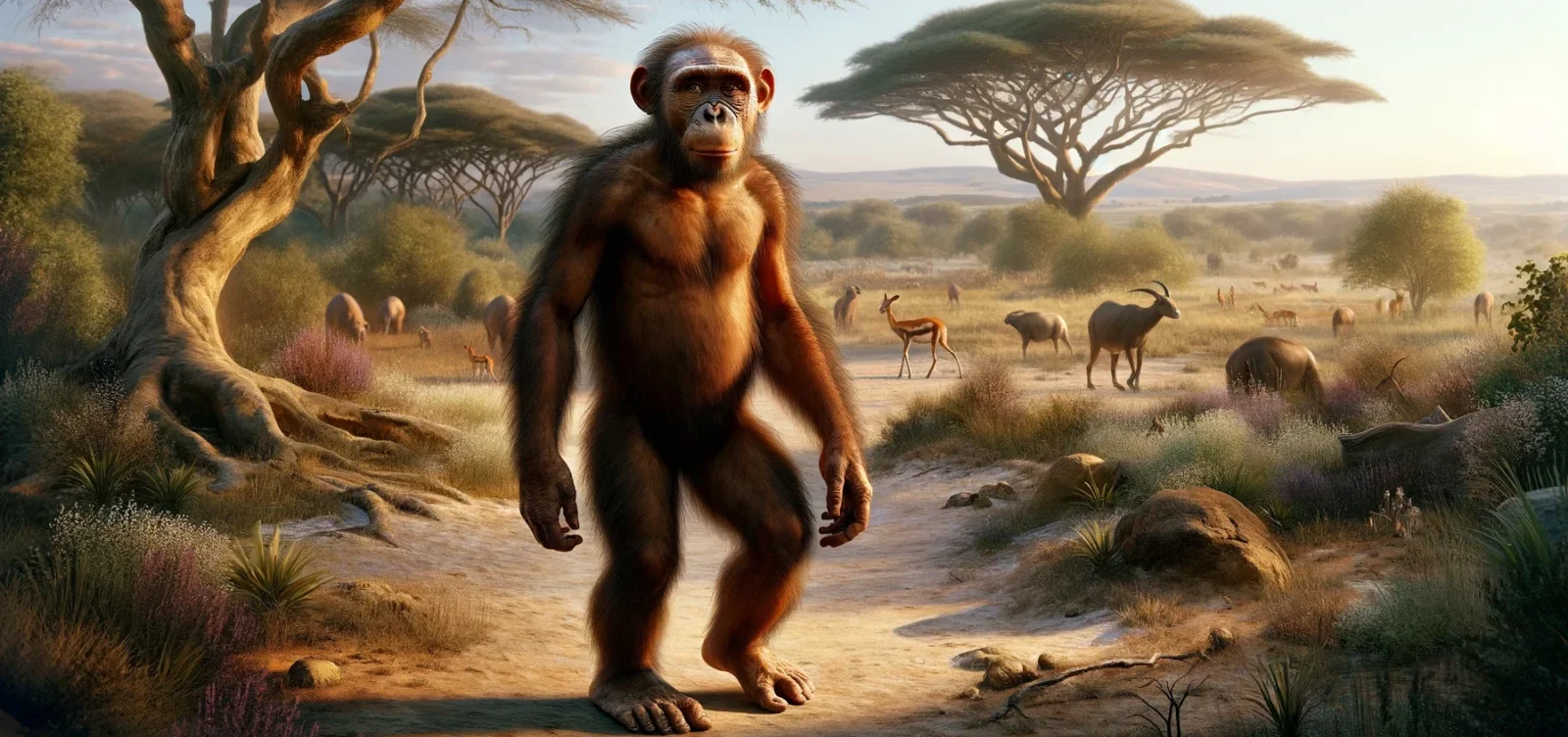










Earliest Identified Human: Earlier hominins are “humanoid,” due to their human-like features, but the term “human” is reserved for species in the genus Homo. Homo habilis is the earliest known of these “early humans.”
First Earth Explorer: Known as the “handy man,” Homo habilis’s association with the earliest stone tools is evidence of unprecedented level of cognitive ability, including foresight, planning, and the ability to manipulate the environment in complex ways. They used stone tools as well as controlled fire. They were likely the first of “us” to explore most of the Earth. We know they evolved into at least 20 known species of which only Homo Sapiens survive today.
You can think of Homo habilis as a super smart chimp, a 55% smarter one.
Survival: From about 2.4 to 1.4 MYA in Eastern and Southern Africa (in woodlands and grasslands)
Size: 3’4″ to 4’5″ (a bit taller than modern chimpanzees)
Brain Size: around 510 to 600 cm³
Brain to Body EQ: 3.3 to 3.8 (humans=7.4 to 7.8)
The earliest containers were likely simple natural resources that early hominins stumbled upon and adapted for use. Starting possibly with Homo habilis around 2.0 million years ago, these early humans may have utilized large leaves, shells, or naturally hollowed-out pieces of wood as rudimentary containers. This usage marks an innovative step in early human technology, reflecting an understanding of natural resources for practical purposes.
As hominins evolved, particularly with the advent of Homo erectus, more sophisticated uses of materials likely developed. Homo erectus, known for their tool-making abilities, might have used animal hides to gather and carry items, gradually fashioning them into simple bags or slings. This represents a significant advancement in carrying technology, allowing for the transport of goods over greater distances and supporting more complex foraging strategies.
Before these developments, even earlier hominins may have employed static storage methods, such as piling resources like rocks or wood in designated locations, such as inside caves or on natural ledges. These caches would have served as communal collection points that group members could contribute to and draw from, reflecting early forms of community resource management.
Additionally, the use of vines or strong plant fibers to tie items together suggests the beginning of material manipulation for transport purposes, predating the knowledge of weaving but laying the groundwork for future technological innovations in container making.
The origins of tent-like structures in human history remain shrouded in mystery, primarily due to the perishable materials involved and the lack of direct archaeological evidence. However, as Homo erectus appeared and spread into varied climates, their enhanced tool-making skills and control of fire likely necessitated and enabled the construction of more complex shelters. This period marks a significant point where early humans may have started to build the first tent-like structures using branches, leaves, and plant fibers to create semi-permanent shelters. The move into cooler environments would have increased the need for such innovations.
Before this timeframe, it’s possible Homo habilis created simple shelters. The emergence of Homo habilis and their use of simple stone tools opens a window of possibility. They might have used vines or branches to create rudimentary windbreaks or lean-tos for temporary protection from the elements.

Around 700,000 years ago, the development of a human-like hyoid bone suggests early hominins may have begun transitioning from simple vocalizations to more structured speech.
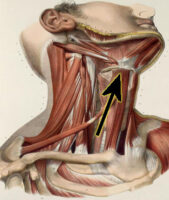
This period marks a critical evolutionary point for Homo heidelbergensis, whose anatomical adaptations for speech, coupled with advanced tool use and complex social structures, indicate possible use of rudimentary language. Earlier hominins like Homo erectus also showed signs of vocal communication, but whether this included structured language remains uncertain. This era highlights the beginnings of speech, setting the stage for the sophisticated linguistic capabilities of later hominins.
Full emotional intelligence (EI) likely emerged around this time in species such as Homo antecessor and Homo heidelbergensis. EI heralds the dawn of a new era where emotional intelligence began to take a recognizable shape.
Analysis: With indications of complex social structures, more potential for language, and advanced tool-making abilities, these species navigated their world with a level of social cognition and emotional awareness that surpassed their predecessors. Their ability to cooperate in hunting, share resources, care for the injured or ill, and possibly mourn their dead, points towards an emerging capacity for understanding the emotional states of others, fostering group cohesion and survival.
References
Full Emotional Intelligence:
- Source: Spikins, P. (2015). “How Compassion Made Us Human: The Evolutionary Origins of Tenderness, Trust and Morality.” Pen and Sword.
- Summary: This book discusses the evolution of emotional intelligence and compassion in early humans, providing evidence for the emergence of these traits in species such as Homo heidelbergensis and Neanderthals.
Complex Social Structures and Potential for Language:
- Source: Wynn, T., & Coolidge, F. L. (2011). “How To Think Like a Neandertal.” Oxford University Press.
- Summary: This book explores the cognitive abilities of Neanderthals and their predecessors, including the development of social structures and the potential for language.
Advanced Tool-Making Abilities:
- Source: Arsuaga, J. L. et al. (2014). “The Early Pleistocene Skeleton from the Sima de los Huesos Cave (Sierra de Atapuerca, Spain).” Proceedings of the National Academy of Sciences, 111(16), 6014-6019.
- Summary: This article discusses the advanced tool-making abilities of Homo heidelbergensis, providing evidence of their cognitive sophistication.
Social Cognition and Emotional Awareness:
- Source: Dunbar, R. I. M. (1998). “The Social Brain Hypothesis.” Evolutionary Anthropology, 6(5), 178-190.
- Summary: This paper presents the Social Brain Hypothesis, which posits that the size of the human brain is related to the complexity of social structures and emotional awareness.
Cooperation in Hunting and Caring for Injured:
- Source: Pettitt, P. (2011). “The Palaeolithic Origins of Human Burial.” Routledge.
- Summary: This book provides evidence of early human burial practices and care for the injured, indicating a level of social and emotional cognition.
Emerging Capacity for Understanding Emotional States:
- Source: Tomasello, M., & Call, J. (2007). “The Gestural Communication of Apes and Monkeys.” Lawrence Erlbaum Associates.
- Summary: This book explores the evolution of communication and the understanding of emotional states in primates, shedding light on the early development of these capacities in humans.
Transcendental Intelligence (TI) likely emerged around this time in species like Homo antecessor and Homo heidelbergensis. Species such as these mark a compelling case for the early development of TI: the ability to store information outside the mind and across generations. This would likely take the form of stories, art, or something like a symbolic marking of an area used as a warning to stay away.
Analysis: Although direct evidence of art or jewelry from this era remains elusive, the sophisticated crafting techniques observed in later Neanderthal and Denisovan artifacts, suggest advanced cognitive abilities capable of TI including symbolic thought and advanced tool making. Denisovans are thought to have split from Neanderthals in Europe about 450,000 years ago, and Homo sapiens branched off in Africa about 315,000 years ago. The speculation that TI developed during this time is grounded in the understanding that the cognitive prerequisites for such advancements—complex problem-solving, abstract thinking, and perhaps rudimentary forms of symbolic communication—were likely present.
Big History Thresholds: 1=Big Bang | 2=Stars&Galaxies | 3=Chemicals | 4=Solar System | 5=First Life | 6=TI | 7=Agrarian | 8=Science
Collective Learning: The 6th threshold in Big History is Collective Learning, what I’ve dubbed Transcendenal Intelligence, the storing of information outside our minds. While Big History has this step set about 200,000 years ago as Homo sapiens emerged, I’ve moved it back to Homo heidelbergensis before Neanderthals and us branched off. After the publication of Big History, neanderthal art was discovered, indicating symbolic thought which might imply TI abilities. It’s important to note that very early collective learning likely emerged in Homo habilis or earlier.
True symbolic thought emerges before 430,000 BCE: The discovery in 2018 of Neanderthal art dating back to 68,000 years ago, proved symbolic thought in Neanderthals. It also indicates strongly that symbolic thought evolved in or before our common ancestor about 430,000 years ago. This must be true unless either they evolved it separately in an example of convergent evolution or we’re wrong about the art, meaning we’re wrong about our idea that humans were not in Spain until after that art. (see my Occam’s Razor article.)
See Beyond the Brain: Reassessing Neanderthal Intelligence, for more information. Humans and Neanderthals had a common ancestor about 430,000 BCE (current estimates range from 430,000 to 450,000 BCE). Humans did not evolve from Neanderthals, but both are the current evolution of a common ancestor: Homo Heidelbergensis. After the split, Homo Sapiens and Neanderthals interbred up to and as recently as 29,000 BCE. Through DNA testing we can identify DNA that came from interbreeding with Neanderthals. They built shelters, wore clothes, used tools, and spoke. Neanderthal DNA in modern humans is the highest in East Asians, intermediate in Europeans, and lower in Southeast Asians.
- Class: Mammal; Genus: Homo; Diet: Omninivore
- Brain Size: 1,200 to 1,700 cm³ (humans=avg=1,350; 1,200 to 1,500 cm³)
- Brain to Body EQ: 4.5 to 5.5, but maybe 6.2, or even 7.9? (humans=7.4 to 7.8)
- Evolved in Europe, spread to Africa and the Middle East.
- Last known: 29,000 BCE in the mountains of Polar Ural, northeastern part of Komi, Russian Federation.
References
- D’Anastasio, R., Wroe, S., Tuniz, C., Mancini, L., Cesana, D. T., & Boscaini, A. (2013). “Micro-Biomechanics of the Kebara 2 Hyoid and Its Implications for Speech in Neanderthals.” PLoS ONE, 8(12), e82261.
- Krause, J., et al. (2007). “The Derived FOXP2 Variant of Modern Humans Was Shared with Neandertals.” Current Biology, 17(21), 1908-1912.
- Wynn, T., & Coolidge, F. L. (2011). “How To Think Like a Neandertal.” Oxford University Press.
The first humans evolved in Africa about 315,000 BCE. These first humans had most of the traits we identify as human including looking and thinking much as we do. They used brain power, innovation, and teamwork. They spoke and controlled fire. Their lives were complex. Over the next 250,000 years they evolved into us. By about 150,000 BCE our current capabilities were mostly evolved. Today’s humans have essentially the same DNA as humans from circa 60,000 BCE.
With the emergence of Homo sapiens, the landscape of consciousness witnessed the dawn of Transcendental Intelligence (TI)—a level of cognitive and cultural sophistication unmatched in the natural world. The 2018 discovery of Neanderthal cave paintings, which dates back over 64,000 years, compellingly extends the evidence of TI to at least 400,000 years ago, demonstrating advanced cognitive abilities such as symbolic thought and artistic expression.
This era, spanning several hundred thousand years, is distinguished not only by the development of complex languages and profound knowledge systems but also by the ability to actively transmit culture, art, and technology. Homo sapiens harnessed TI to shape their environments, conceive abstract concepts, and establish societies with intricate social norms and belief systems. Similarly, Neanderthals, with their complex behaviors and symbolic practices, demonstrated a capacity for TI that suggests a broader cognitive potential within the genus Homo. As modern AI systems begin to replicate aspects of TI in information processing and communication, they reflect humanity’s ongoing quest to understand and replicate the depths of its own intelligence. However, the quintessential human experiences of consciousness, emotion, and cultural identity remain unparalleled, emphasizing the profound mystery and uniqueness of human cognition and its evolution over millennia.
Imagined image: two Homo sapiens males from different stages of human evolution are featured. The first figure represents Homo sapiens from about 300,000 years ago, and the second from about 100,000 years ago, each with distinct features representative of their times.
End of timeline. Review…
Evolution TL: March to Life > Evolution > Great Apes > Human > Consciousness > All to Us




